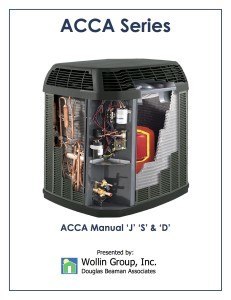We have two course sets that focus on the complete range of ACCA Manuals. Both incorporate the Wrightsoft software to calculate  loads and equipment selection.
loads and equipment selection.
- Course Set 1 Residential: Focuses on Residential Design incorporating Manual J, S, D, & T.
- Course Set 2 Non-Residential: Focuses on Non-Residential Design (Small Commercial) Manual N, CS and D/Q

